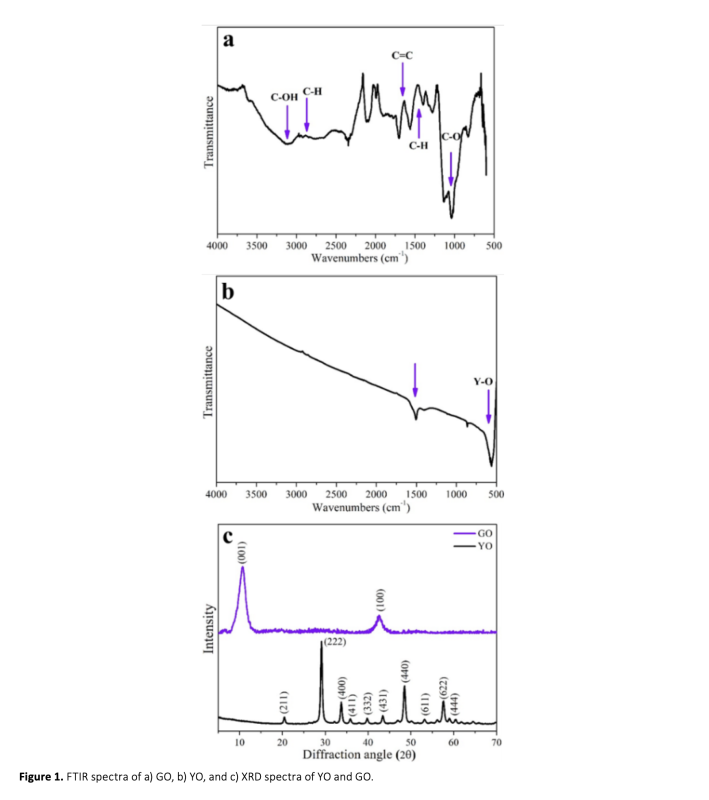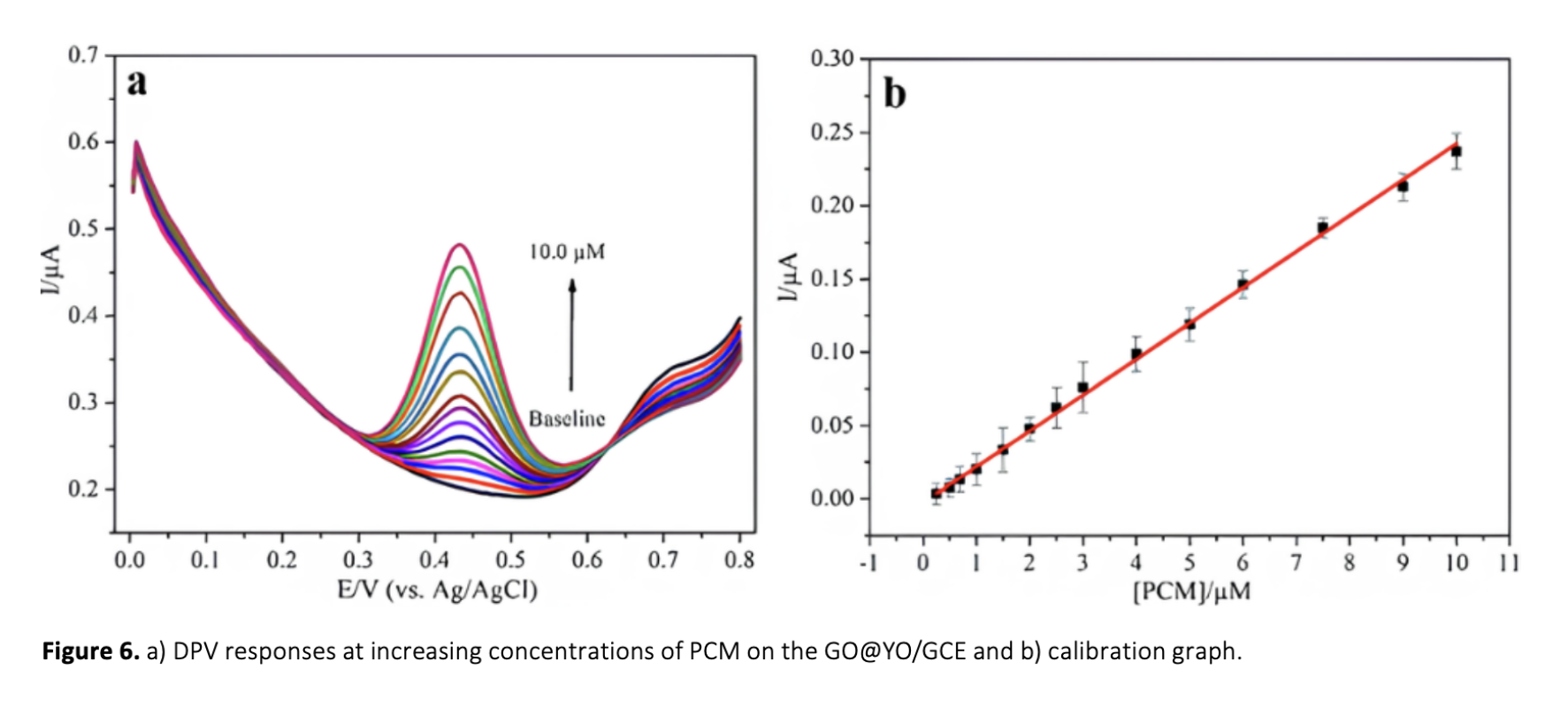In this study, graphene oxide (GO) was synthesized by the Hummers method starting from graphite. Also, yttrium(III) oxide (Y2O3, YO) was synthesized with the sol-gel method and was characterized by Fourier transform infrared spectroscopy (FTIR), X-Ray diffraction (XRD), scanning electron microscopy (SEM) and transmission electron microscopy (TEM) techniques. The sensor performance of the modified electrode against the paracetamol analyte was investigated by cyclic voltammetry (CV) and differential pulse voltammetry (DPV). As a result of the optimized voltammetric methods calculated the linear working range was 0.25-10.0 μM and the limit of detection (LOD) value was 19.0 nM. With the DPV method, advanced analytical parameters such as stability, reproducibility, and selectivity were studied. Moreover, the performance of the new sensor to detect paracetamol in real tablet samples was examined.
Bu çalışmada grafitten yola çıkılarak Hummers yöntemiyle grafen oksit (GO) sentezlendi. Ayrıca sol-jel yöntemiyle itriyum(III) oksit (Y2O3, YO) sentezlendi ve Fourier dönüşümlü kızılötesi spektroskopisi (FTIR), X-Işını kırınımı (XRD), taramalı elektron mikroskobu (SEM) ve geçirimli elektron miktroskobu (TEM) teknikleriyle karakterize edildi. Modifiye elektrotun parasetamol analite karşı sensör performansı, dönüşümlü voltametri (CV) ve diferansiyel puls voltametrisi (DPV) ile araştırıldı. Optimize edilmiş voltametrik yöntemler sonucunda hesaplanan doğrusal çalışma aralığı 0.25-10.0 μM ve algılama limiti (LOD) değeri 19.0 nM olarak bulundu. DPV yöntemi ile stabilite, tekrarlanabilirlik ve seçicilik gibi ileri analitik paramet- reler üzerinde çalışıldı. Ayrıca yeni sensörün performansı gerçek tablet örneklerindeki parasetamolü tayin edebilmek için incelendi.




Download Article in PDF (2.5 MB)